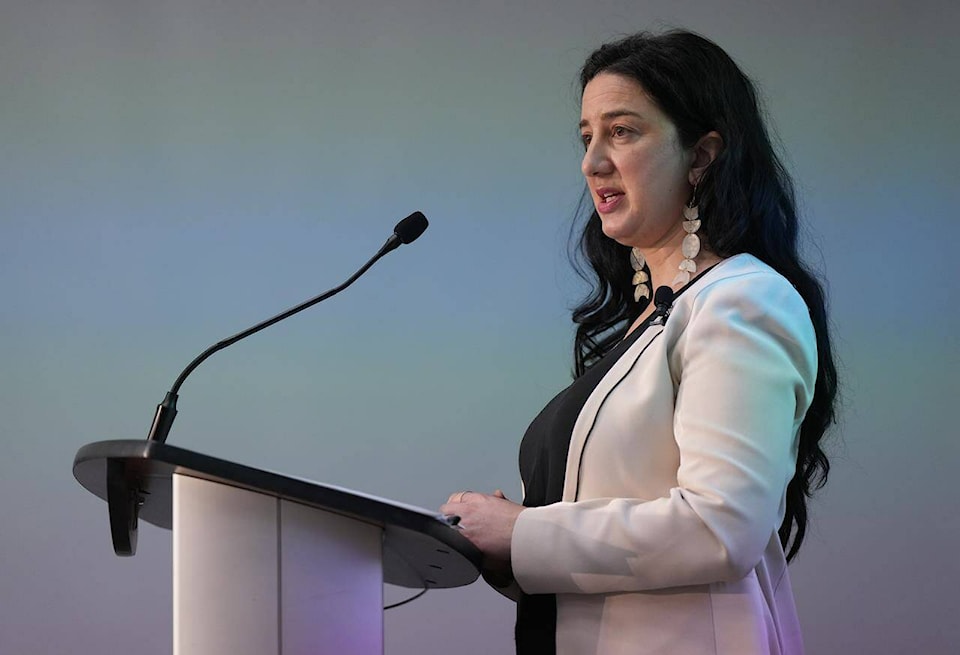A report from the B.C. Office of the Human Rights Commissioner focusing on challenges in Cranbrook identifies a significant shortage of subsidized housing, substantial community impacts stemming from the toxic drug crisis and major barriers in place for accessing supports.
The report also recognized discrimination faced by Indigenous peoples, people experiencing homelessness and people living with disabilities across all kinds of settings such as housing, employment, health care.
“To ensure our work is relevant and effective, we need to first look at the real impacts of human rights issues on the ground,” said Commissioner Kasari Govender. “We are committed to listening and responding to communities, ensuring that peoples experiences with human rights are at the centre of our work.”
Discrimination against Indigenous People was a common thread throughout the brief, as there are approximately 2,000 Indigenous people living in Cranbrook, along with 400 residents in neighbouring Aqam, as the legacy of colonization and it’s impact continue to reverberate throughout all aspects of life today.
Additionally, the report identifies seven per cent of Cranbrok’s population as a visible minority.
The report, one of four community briefs that the commissioner’s office have compiled, focused on three key areas including housing and poverty, health, and discrimination and hate, and included community connector input from a wide spectrum of community participants and organizations, as well as anonymous first-person anecdotes.
Two of those organizations included the Cranbrook Food Bank and ANKORS, among others.
“We are in the middle of a cost-of-living crisis that is violating people’s right to an adequate standard of living. Food and shelter are the two expenses no household can avoid and they cost significantly more every year,” said Julie Rose, executive director of the Cranbrook Food Bank.
“We try so hard at our food bank to fill the gaps, but increased client numbers and decreased donations make it challenging. The Community Briefs highlight this issue and underscore a need to strengthen our social safety net to support our most vulnerable community members.”
Based on Statistics Canada data from 2020, approximately six per cent of Cranbrook residents live in poverty, and can have significant impacts on certain demographics, such as children living in female-led single parent families, which was 24 per cent.
For rental housing, roughly one in three tenants were spending 30 per cent or more of their income on housing, while one in seven tenant households live in some form of subsidized housing or receiving rent supplements for market housing.
Concerns were also raised, based on real-world examples, of illegal rent increases and sexual exploitation by landlords.
The city’s homelessness population ballooned from point-in-time counts from 63 individuals in 2020 to 116 in 2023. The point-in-time counts are typically undercounts, as the Travelodge, which serves as a temporary shelter, served 267 distinct individuals in 2022/23.
Those who are unhoused also face barriers and stigma to accessing essential services.
Housing iniquities were identified for Indigenous peoples, people experiencing gender-based violence, and people living with disabilities.
The brief notes that Indigenous peoples seeking rental housing in Cranbrook, due to a housing shortage in Aqam, face discrimination, while the state of the housing market has led to an increase in the number of women and gender diverse people living in unsafe housing situations.
More supportive and non-market housing was identified as a major need in the City of Cranbrook’s recent Housing Needs Report, which noted the city will need 1,400 units over the next decades, 900 of which should be allocated as affordable housing.
Community stigma is a major challenge to addressing food insecurity, even as the Cranbrook Food Bank has increased their daily hampers to nearly 100. The food bank has launched a new shopping model that helps give people more autonomy and dignity when using food bank services.
On right to health care, barriers to accessing medical specialist services were noted, while adding in the layer that Cranbrook was having difficulty attracting professionals due to the housing shortage.
Iniquities in health were identified for Indigenous Peoples, people experiencing homelessness, those who use substances and people with disabilities.
In all of those areas, discrimination was routinely noted when accessing health and community services.
The toxic drug crisis has had a major impact in Cranbrook, exacerbated by the COVID-19 pandemic. Between January 2020 to August 2023, 51 people in Cranbrook died from drug poisonings. The Aqam community also experienced multiple toxic drug deaths, and declared a state of emergency around drug and gang-related deaths.
ANKORS is one organization that has been heavily involved in community action and response to the crisis.
“Our community is growing and we have faced many challenges in terms of the housing crisis, food security, poverty and stigma against people who use drugs.,” said Polly Sutherland, Team Lead, with ANKORS Cranbrook.
“The current drug poisoning crisis adds another layer. These Community Briefs provide inclusion, compassion and respect, and a safe platform to have this important dialogue.”
The report identified the types of discrimination and hate faced by Indigenous Peoples, people who are experiencing homelessness, people who use substances and people living with disabilities, and those facing gender-based violence.
